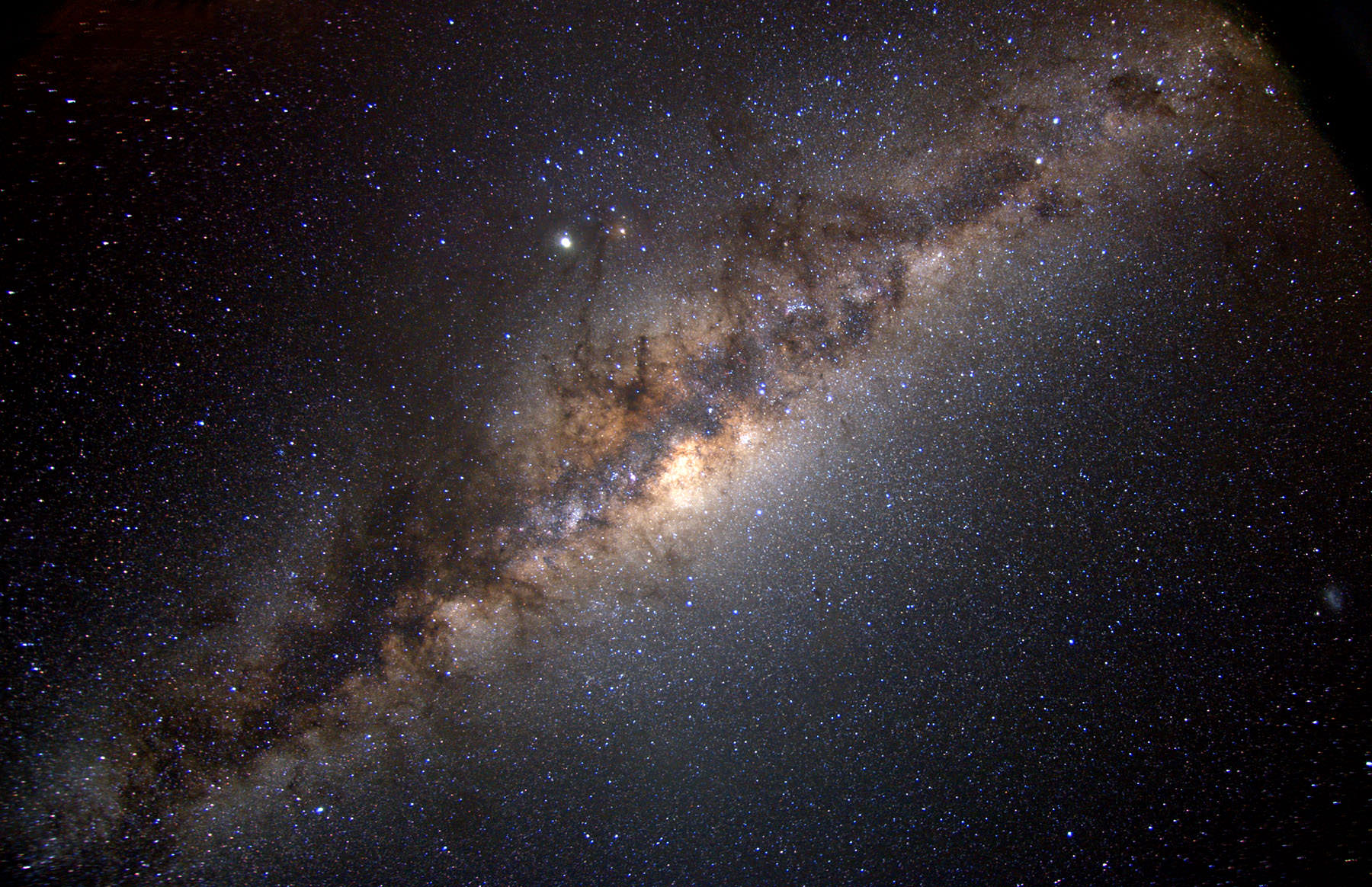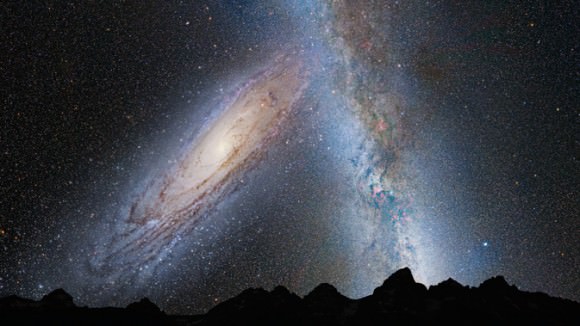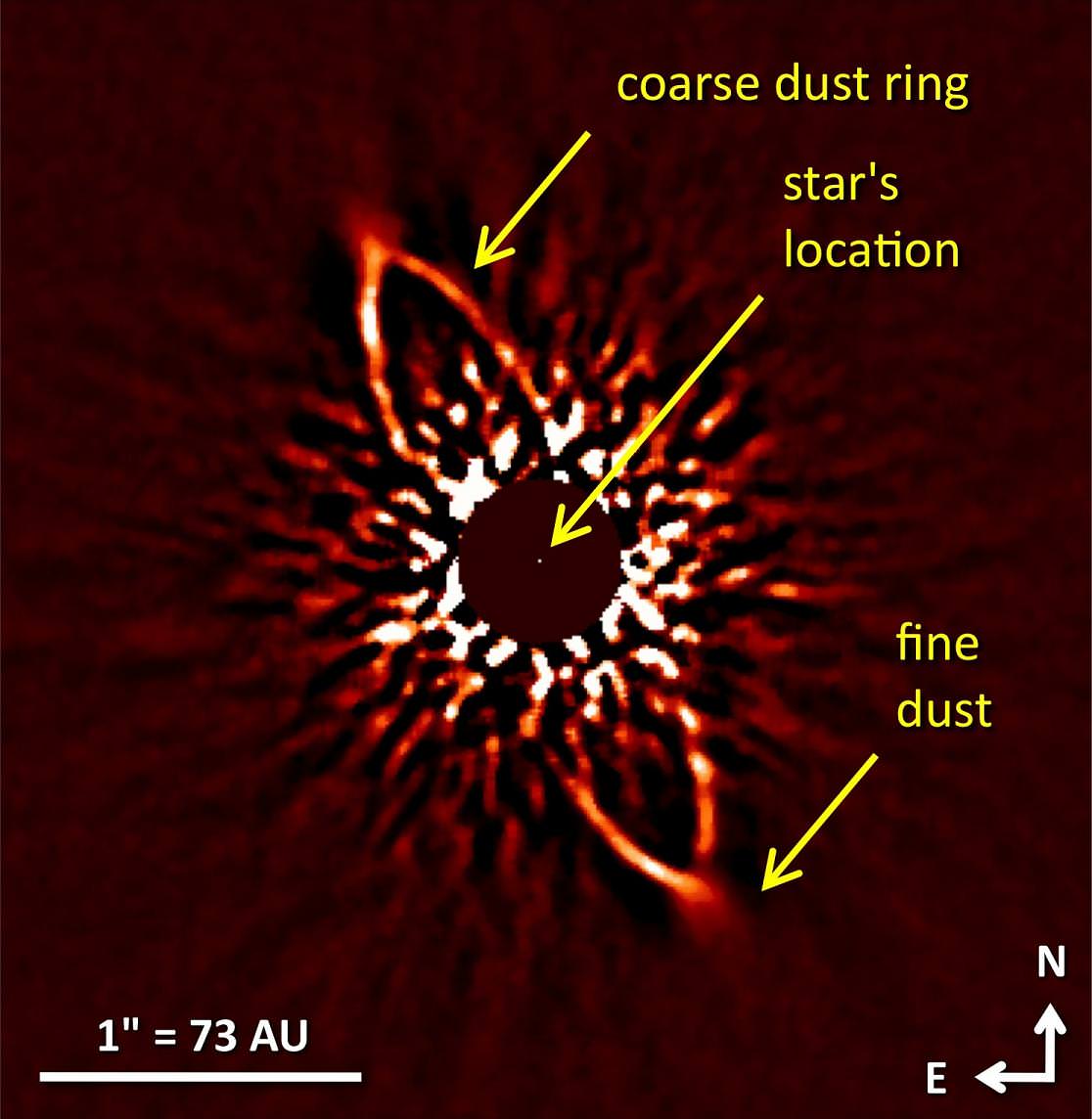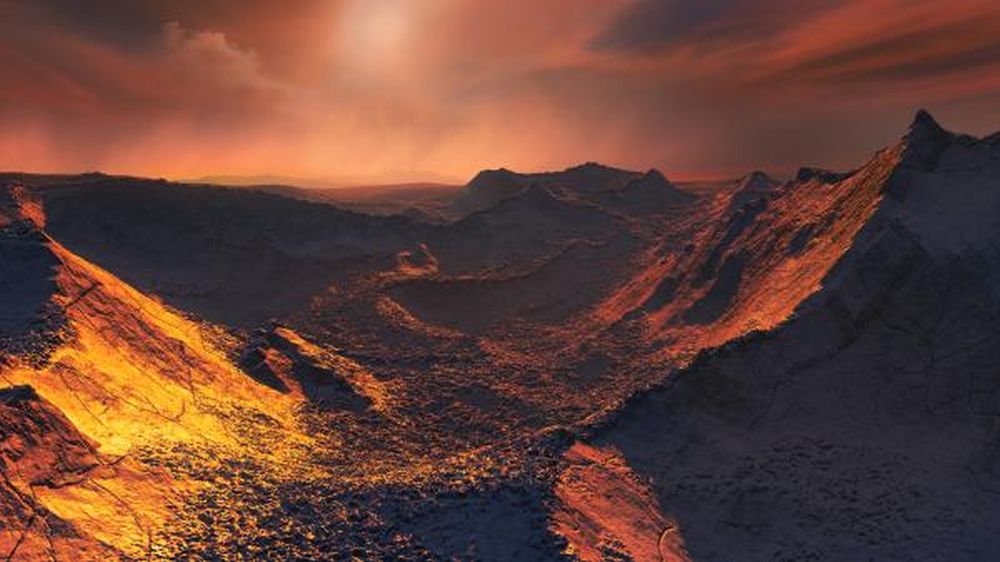A lot of the headlines and discussion around the habitability of exoplanets is focused on their proximity to their star and on the presence of water. It makes sense, because those are severely limiting factors. But those planetary characteristics are really just a starting point for the habitable/not habitable discussion. What happens in a planet’s interior is also important.
Continue reading “Habitability of Planets Will Depend on Their Interiors”Ancient Impacts Shaped the Structure of the Milky Way

Understanding how the Universe came to be is one of the greater challenges of being an astrophysicist. Given the observable Universe’s sheer size (46.6 billion light years) and staggering age (13.8 billion years), this is no easy task. Nevertheless, ongoing observations, calculations and computer simulations have allowed astrophysicists to learn a great deal about how galaxies and larger structures have changed over time.
For example, a recent study by a team from the University of Kentucky (UK) has challenged previously-held notions about how our galaxy has evolved to become what we see today. Based on observations made of the Milky Way’s stellar disk, which was previously thought to be smooth, the team found evidence of asymmetric ripples. This indicates that in the past, our galaxy may have been shaped by ancient impacts.
The study, titled “Milky Way Tomography with K and M Dwarf Stars: The Vertical Structure of the Galactic Disk“, recently appeared in the The Astrophysical Journal. Led by Deborah Ferguson, a 2016 UK graduate, the team consisted of Professor Susan Gardner – from the UK College of Arts and Sciences – and Brian Yanny, an astrophysicist from the Fermilab Center for Particle Astrophysics (FCPA).
This study evolved from Ferguson’s senior thesis, which was overseen by Prof. Gardner. At the time, Ferguson sought to expand on previous research by Gardner and Yanny, which also sought to understand the presence of ripples in our galaxy’s stellar disk. For the sake of this new study, the team relied on data obtained by the Sloan Digital Sky Survey‘s (SDSS) 2.5m Telescope, located at the Apache Point Observatory in New Mexico.
This allowed the team to examine the spatial distribution of 3.6 million stars in the Milky Way Galaxy, from which they confirmed the presence of asymmetric ripples. These, they claim, can be interpreted as evidence of the Milky Way’s ancient impacts – in other words, that these ripples resulted from our galaxy coming into contact with other galaxies in the past.
These could include a merger between the Milky Way and the Sagittarius dwarf galaxy roughly 0.85 billion years ago, as well as our galaxy’s current merger with the Canis Major dwarf galaxy. As Prof. Gardner explained in a recent UK press release:
“These impacts are thought to have been the ‘architects’ of the Milky Way’s central bar and spiral arms. Just as the ripples on the surface of a smooth lake suggest the passing of a distant speed boat, we search for departures from the symmetries we would expect in the distributions of the stars to find evidence of ancient impacts. We have found extensive evidence for the breaking of all these symmetries and thus build the case for the role of ancient impacts in forming the structure of our Milky Way.”

As noted, Gardner’s previous work also indicated that when it came to north/south symmetry of stars in the Milky Way’s disk, there was a vertical “ripple”. In other words, the number of stars that lay above or below the stellar disk would increase from one sampling to the next the farther they looked from the center of the galactic disk. But thanks to the most recent data obtained by the SDSS, the team had a much larger sample to base their conclusions on.
And ultimately, these findings confirmed the observations made by Ferguson and Lally, and also turned up evidence of an asymmetry in the plane of the galactic disk as well. As Ferguson explained:
“Having access to millions of stars from the SDSS allowed us to study galactic structure in an entirely new way by breaking the sky up into smaller regions without loss of statistics. It has been incredible watching this project evolve and the results emerge as we plotted the stellar densities and saw intriguing patterns across the footprint. As more studies are being done in this field, I am excited to see what we can learn about the structure of our galaxy and the forces that helped to shape it.”
Understanding how our galaxy evolved and what role ancient impact played is essential to understanding the history and evolution of the Universe as a whole. And in addition to helping us confirm (or update) our current cosmological models, studies like this one can also tell us much about what lies in store for our galaxy billions of years from now.
For decades, astronomers have been of the opinion that in roughly 4 billion years, the Milky Way will collide with Andromeda. This event is likely to have tremendous repercussions, leading to the merger of both galaxy’s supermassive black holes, stellar collisions, and stars being ejected. While it’s doubtful humanity will be around for this event, it would still be worthwhile to know how this process will shape our galaxy and the local Universe.
Further Reading: University of Kentucky, The Astrophysical Journal
Suburu Telescope Captures Hidden Planets In Stellar Dust Ring

[/caption]
No. It’s not a new atomic image – it’s a very unusual look at a star which could help further our understanding of stellar disk structure and planetary formation. As part of the SEEDS (Strategic Exploration of Exoplanets and Disks with Subaru Telescope/HiCIAO) project, this image of star HR 4796 was taken with Subaru’s planet-finder camera, HiCIAO (High Contrast Instrument for the Subaru Next Generation Adaptive Optics). At only about 8-10 million years old, the feature of this stellar image is only about 240 light years away from Earth, yet fully displays its ring of dust grains which reach out about twice the distance as Pluto’s orbit from the central star. This image produced by an international group led by Motohide Tamura of NAOJ (National Astronomical Observatory of Japan) is so wonderfully detailed that an offset between its center and the star’s position can be measured. While the offset was predicted by data from the Hubble and another research group, this new photographic evidence not only confirms its presence – but shows it to be larger than expected.
With new data to work from, researchers began to wonder exactly what could have caused the dust torus to run off its axis. The easiest explanation would be gravitational force – where one or more planets located inside the gap within the ring could possibly be affecting the disk. This type of action could account for an “unbalancing” which could act in a predictable manner. Current computer modeling has shown these types of “gravitational tides” can mold a dust torus in unusual ways and they cite similar data gathered from observations of bright star, Formalhaut. Since no planet candidates have yet been directly observed around HR 4796, chances are any planets present are simply too small and dim to be spotted. However, thanks to the new Suburu image, researchers feel confident their presence could be the source of the circumstellar dust ring wobble.
With image accuracy as pinpoint as the Hubble Space Telescope, the Suburu near-infrared depiction allows for extremely accurate measurements by employing its adaptive optics system. This type of advanced astrophotography also allows for angular differential imaging – by-passing the glare of the central star and enhancing the faint signature of the dust ring. Such techniques are able to establish heightened information about the relationship of the circumstellar disk and gelling planets… a process which may begin from the “left-overs” of initial star formation. As surmised, this material could either be picked up by newly formed planets or be pushed out the system via stellar winds. Either way, it is a process which eliminates the majority of the dust within a few tens of millions of years. However, there are a few stars which continue to hold on to a “secondary disk” – a collection of dust which could be attributed to the collision of planetesimals. In the case of HR 4796, this is a likely scenario and studying it may provide a better understanding of how planets could form in this alternate debris disk.
Original Story Source: Suburu Telescope News Release. For Further Reading: Direct Images of Disks Unravel Mystery of Planet Formation.

